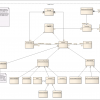 |
Eliminate Fake Certainty and Solve the Real Problem Too often, customers have a “fake certainty” about the problems they want to solve. They might not have defined the real problem, but they have frequently defined the solution anyway. The risk is that we might build the wrong thing. When the product owner works with the customers to define the problem, then works with the team to define the solution, everyone can win.
|
|
 |
Managing BDD Automation Test Cases inside Test Management Systems
Slideshow
Behavior-driven development (BDD) has been around for a while and is here to stay. However, the added abstraction levels pose a technical problem for writing and managing tests. While BDD does a great job of marrying the nontechnical aspect of test writing to the technical flow of an application under test, keeping this information under source control becomes problematic. Frameworks such as JBehave, Cucumber, or Robot give subject matter experts that additional ability to write tests, but they are often restricted access from them; because people treat test cases as code, they get stored in source control repositories. Additionally, these given-when-then steps soon can grow to an extent where they are difficult to manage without an IDE, and nontechnical people lose interest. Using management tools, Max Saperstone shows how to manage these nontechnical steps and keep them in sync with the automaton in tools such as Git.
|
Max Saperstone
|
 |
Mission Critical Automation Testing
Slideshow
When critical subsystems fail, the resulting losses can be catastrophic. In the insurance industry, if premiums are miscalculated, defect costs can reach well over a million dollars. In this session, Mike Keith and Dom Nunley draw on their practical experience with insurance systems testing to provide an overview of combinatorial automation testing for high-risk backend system areas—i.e., features that absolutely must work correctly. They share a process for categorizing requirement risk levels to determine which requirements warrant combinatorial testing. Mike and Dom illustrate various combinatorial testing techniques such as N-FAT, N-Wise, and RANDOM, which can be used to automatically generate test cases. These methods are used to ensure coverage against risk while controlling the number of tests that run.
|
Mike Keith
|
 |
Requirements Mapping Using Business Function Test Suites On this team, testers were overcommitted, avoidable defects were surfacing, and documentation was hard to find. Worse, trust and morale were low. Upgrading tools was out of the question, so the testers decided to take matters into their own hands and create incremental change themselves. Here's how a team added a new type of traceability to its requirement test case world.
|
|
 |
The Five Biggest Mistakes Your Team Is Making in Requirements Definition
Slideshow
Google pioneer Alberto Savoia offered this sage advice: Build the right "it" before you build It right. But few software companies take the time to define, much less build, the right "it." The problem starts with a poor requirements definition process. In this session, join Kathryn Campbell as she examines the five most common mistakes that software companies make during requirements definition—and how to avoid them. First Kathryn defines thinking too small as a huge problem and shows you how to broaden your perspectives. Next, she exposes being stuck in the past, with legacy systems maintaining too much control of our innovation. The third mistake is assuming too much about your customers. Kathryn shares guerrilla techniques for gathering rapid, inexpensive customer feedback at every stage of your requirements and design process.
|
Kathryn Campbell
|
 |
Fitting Technical Writing into Agile Development As teams strive to move to a mature agile process, technical writers must adapt as effectively as the development personnel. This new agile process demands that knowledge dealing with software or product releases is only sparingly documented up front, making the technical writer's job of gathering information much more dependent on talking with people over reading requirements.
|
|
 |
Rightsizing User Stories
Slideshow
User stories and their big brothers, epics, are an excellent way to describe requirements for a software system. They act as stakes in the ground to keep track of what the system needs to do, the type of user most interested in each feature, and the reason the requirement...
|
Dave Todaro
|
 |
Get Involved Early: A Tester’s Experience with Requirements
Slideshow
Although requirements provide valuable information that informs and shapes testing, sometimes the information provided is incomplete or unclear. Join Julie Lebo as she shares her experience with requirements engineering and how she has integrated her testing group into the requirement...
|
Julie Lebo
|
 |
Slim Down Your Test Plan Documentation Test plans are essential for communicating intent and requirements for testing efforts, but excessive documentation creates confusion—or just goes unread. Try the 5W2H method. The name comes from the seven questions you ask: why, what, where, when, who, how, and how much. That's all you need to provide valuable feedback and develop a sufficient plan of action.
|
|
 |
Streamline Your Agile Requirements by Avoiding Bloated Backlogs In agile development, a bloated backlog results from teams accumulating huge lists of requirements, usually in the form of user stories. Retaining every possible story for building the product weighs down the backlog while squeezing (or obscuring) the highest-value stories. The best way to help minimize this risk is to optimize the time spent defining and refining the product priorities.
|
|

